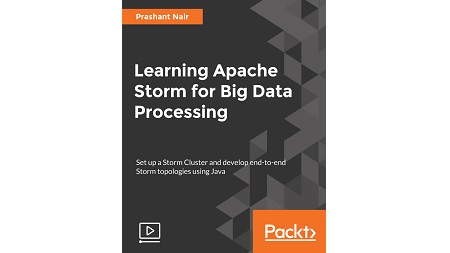English | MP4 | AVC 1920×1080 | AAC 48KHz 2ch | 2h 35m | 891 MB
Learning Apache Storm for Big Data Processing
Apache Storm is a distributed real-time processing engine. Created by Nathanmarz for Backtype and later open sourced under Apache License 2, it’s a scalable and a fault-tolerant engine used to process a massive number of unbounded streams. In this course you will see how simple yet efficient Apache Storm is when it comes to real-time processing.
In the course, you will learn about data processing types followed by Apache Storm and its features. You’ll learn the core concepts of Apache Storm such as spouts, bolts, topology, and stream grouping, and set up Apache Storm in single-node and multi-node configurations. Also you’ll explore how fault-tolerant Apache Storm is.
Taking this course will kick-start your experience with Apache Storm; you’ll create a scalable, fault-tolerant, real-time processing application while setting a strong base for the fundamentals of the real-time processing paradigm and Apache Storm.
This course will help readers understand Apache Storm from scratch and enhance their basic knowledge of the real-time processing paradigm, all with relevant examples
What You Will Learn
- Core big data processing concepts
- Core components of Apache Storm
- Developing Apache Storm applications from scratch
- Defining terms associated with Apache Storm
- Setting up single- and multi-node clusters in Apache Storm
- Integrating Apache Hadoop with Apache Storm
- Performing transformation operations using tridents
- Understanding Parallelism and using StreamGroupings for tuple interaction.
Resolve the captcha to access the links!
